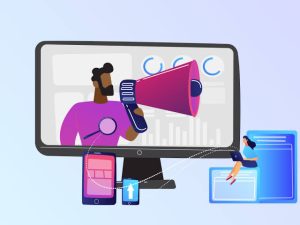Remote jobs are becoming increasingly popular and offer many benefits. They allow you to work from the comfort of your own home or anywhere with an internet connection. Remote jobs provide flexibility in terms of working hours and location, and they often eliminate the need for commuting.
There are various remote job opportunities available in different fields such as software development, customer service, marketing, and more. Many websites and platforms specialize in listing remote job openings, such as Indeed, LinkedIn, and Remote.co. It’s a great option to explore if you value flexibility and independence in your work life!
Kinds of jobs to do online (remotely)
There are several popular remote job fields that offer great opportunities for remote work. Some of the popular ones include:
1. Software Development:

Many software developers work remotely, creating and maintaining software applications and systems.
As a remote software developer, you have the flexibility to work from anywhere while building and maintaining software applications and systems. Here are some key points about remote software development jobs:
1. Collaboration Tools: Remote software developers rely on various collaboration tools to communicate and work with their team members. These tools include project management platforms, version control systems like Git, and communication tools like Slack or Microsoft Teams.
2. Flexibility: Remote software developers have the freedom to set their own schedules and work from the location of their choice. This flexibility allows for a better work-life balance and eliminates the need for commuting.
3. Remote Teamwork: Despite not being in the same physical location, remote software developers collaborate with their team members through virtual meetings, code reviews, and shared documentation. Effective communication and collaboration skills are essential for success in remote software development roles.
4. Technical Skills: Remote software developers need a strong foundation in programming languages such as Python, Java, JavaScript, or C++. They should also have knowledge of frameworks, libraries, and tools relevant to their specialization, such as web development frameworks or mobile app development tools.
5. Continuous Learning: The field of software development is constantly evolving, and remote developers need to stay updated with the latest technologies and trends. Continuous learning through online courses, tutorials, and staying active in developer communities is crucial.
Remote software development jobs offer the opportunity to work on exciting projects, contribute to cutting-edge technologies, and be part of a global community of developers. If you have a passion for coding and enjoy working independently, remote software development could be a great fit for you!
2. Customer Service:

Customer service rep. Image source: Forbes
Remote customer service representatives assist customers via phone, chat, or email, providing support and resolving issues.
3. Digital Marketing:

Remote digital marketers help businesses promote their products or services online through strategies like social media marketing, SEO, and content creation.
Remote digital marketing jobs are a popular choice for those who enjoy working in the online space and helping businesses grow their online presence. Here’s some more information about remote digital marketing jobs:
1. Online Advertising: Remote digital marketers often work on creating and managing online advertising campaigns, such as Google Ads or social media ads, to reach target audiences and drive conversions.
2. Social Media Marketing: Remote digital marketers help businesses build and execute social media strategies, create engaging content, and manage social media platforms to connect with their audience and increase brand awareness.
3. Search Engine Optimization (SEO): Remote digital marketers optimize websites to improve their visibility in search engine results. This involves keyword research, on-page optimization, link building, and monitoring website analytics.
4. Content Marketing: Remote digital marketers develop content strategies, create compelling content such as blog posts, articles, and videos, and distribute it through various channels to attract and engage the target audience.
5. Analytics and Reporting: Remote digital marketers use tools like Google Analytics to analyze data, track campaign performance, and provide insightful reports to help businesses make data-driven decisions.
6. Email Marketing: Remote digital marketers design and execute email marketing campaigns, create engaging email content, and analyze email metrics to optimize campaign effectiveness.
Remote digital marketing jobs require a combination of creativity, analytical skills, and a solid understanding of online marketing channels. It’s a dynamic field with plenty of opportunities for growth and learning.
4. Graphic Design:

Graphic designer. Image source: Learn G2
Remote graphic designers create visual elements for various mediums, such as websites, advertisements, and branding.
Remote graphic designers also work on various design projects such as creating logos, branding materials, website designs, social media graphics, and print collateral.
2. Collaboration Tools: Remote graphic designers use collaboration tools like Adobe Creative Cloud, Figma, or Sketch to communicate and work with clients and team members. These tools allow for seamless sharing of design files and feedback.
5. Content Writing:

Remote content writers produce written content for websites, blogs, social media, and other platforms.
6. Virtual Assistance:
Remote virtual assistants provide administrative support, manage schedules, handle emails, and perform various tasks remotely.
These are just a few examples, but there are remote job opportunities in almost every field. It’s worth exploring different industries to find the best remote job that aligns with your skills and interests!
Pingback: The Essential Roles of a Personal Assistant - SimplExplainer
Pingback: Attracting Top Talent: Strategies for Hiring Success on LinkedIn - SimplExplainer